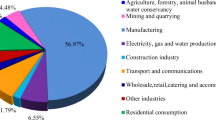Abstract
This paper proposes the solution to reduce the energy consumption of forming machine for the composite stringer manufacturing by applying the lean manufacturing techniques. The lean techniques such as standard operating procedures, single minute exchange of dies, external set-up based on production efficiency improvement are used to optimize the stringer manufacturing process. The improved set-up is performed during machine operation to reduce cycle time thus, enable continuous production of various stringers. As a result, the cycle time of development machine having the process improvement effects is reduced by 84.8%. In order to achieve this, the development machine is consisted of two lower stations, upper chamber, auto side indexes and quick centering devices. The work process is simplified by applying automatic machine instead of conventional machine. As well as the improved method produced two composite stringer in one cycle, it could reduce the machine energy consumption and increase the productivity.













Similar content being viewed by others
Abbreviations
- CS:
-
Composite Stringer
- EM :
-
Machine Efficiency
- ESU:
-
External Set-Up
- ISU:
-
Internal Set-Up
- LM:
-
Lay-up Mandrel
- SMED:
-
Single Minute Exchange of Dies
- SOP:
-
Standard Operating Procedures
References
Yoon, H. S., Kim, E. S., Kim, M. S., Lee, J. Y., Lee, G. B., & Ahn, S. H. (2015). Towards greener machine tools A review on energy saving strategies and technologies. Renewable and Sustainable Energy Reviews, 48, 870–891.
Kim, T. J., Kim, T. H., & Jee, S. C. (2013). Standby strategies for energy saving in peripheral machine of machine tools. Journal of KSPE, 30(5), 486–492.
Campatelli, G., Scippa, A., Lorenzini, L., & Sato, R. (2015). Optimal workpiece orientation to reduce the energy consumption of a milling process. International Journal of Precision Engineering Manufacture Green Technology, 2(1), 5–13.
Park, H. S., Nguyen, T. T., & Dang, X. P. (2016). Energy-efficient optimization of forging process considering the manufacturing history. International Journal of Precision Engineering Manufacture Green Technology, 3(2), 147–154.
Cho, J. H. (2004). CNC complex forming apparatus for the aircraft fuselage stringer forming. Soosung Airframe Corporation, 10, 2004–0058359.
Lee, M. S., Seo, H. Y., & Kang, C. G. (2016). Comparative study on mechanical properties of cr340/CFRP composites through three point bending test by using theoretical and experimental methods. International Journal of Precision Engineering Manufacture Green Technology, 3(4), 359–365.
Wilkerson, R. D., Fox, J. R. (2013). Method and apparatus for forming thick thermoplastic composite structures. The Boeing Company Patent, PCT/US2013/058670.
Brennan, J. D., Jones, D. D., & Robins, B. G. (2009). Method and apparatus for forming and installing stringers. The Boeing Company Patent, 09251515, 4.
Anderson, D. A., Chapman, M. R., Kisch, R. A., & Zaballos, K. P. (2013). Apparatus for producing composite fillers. The Boeing Company Patent, 14(083), 445.
Oda, Y., Kawamura, Y., & Fujishima, M. (2012). Energy consumption reduction by machining process improvement. Procedia CIRP, 4, 120–124.
Song, Y. J., Woo, J. H., Lee, D. K., & Shin, J. G. (2008). A simulation study for evaluation of alternative plans and making the upper-limit for improvement in productivity of flow-shop with considering a work-wait time. Journal of the Korea Society for Simulation, 17(2), 63–74.
Cherrafi, A., Elfezazi, S., Chiarini, A., Mokhlis, A., & Benhida, K. (2016). The integration of lean manufacturing, six sigma and sustainability: a literature review and future research directions for developing a specific model. Journal of Cleaner Production, 139, 828–846.
Widiasih, W., Karningsih, P. D., & Ciptomulyono, U. (2015). Development of integrated model for managing risk in lean manufacturing implementation: a case study in an Indonesian manufacturing company. Procedia Manufacturing, 4, 282–290.
Helleno, A. L., Moraes, A. J. I., & Simon, A. T. (2017). Integrating sustainability indicators and Lean Manufacturing to assess manufacturing processes: Application case studies in Brazilian industry. Journal of Cleaner Production, 153, 405–416.
Alhuraish, I., Robledo, C., & Kobi, A. (2016). Assessment of lean manufacturing and six sigma operation with decision making based on the analytic hierarchy process. IFAC-Papers OnLine, 49(12), 59–64.
Moeuf, A., Tamayo, S., Lamouri, S., Pellerin, R., & Lelievre, A. (2016). Strengths and weaknesses of small and medium sized enterprises regarding the implementation of lean manufacturing. IFAC-Papers OnLine, 49(12), 71–76.
Lee, S. S. (2015). An empirical study of agile manufacturing and its business performance: focusing on antecedents of agility. Journal of the Korea Industrial Information Systems Research, 20(1), 103–112.
Sundar, R., Balaji, A. N., & SatheeshKumar, R. M. (2014). A review on lean manufacturing implementation techniques. Procedia Engineering, 97, 1875–1885.
Mitsubishi co. ltd. (2007). Mitsubishi Melservo J3 Catalog. Japan.
Choi, W. S., & Lim, W. S. (2014). Performance analysis on the driving system of multiple load system. Journal of the Korean Society of Mechanical Technology, 16(5), 1887–1893.
Kim, D. T., & Zhang, Z. J. (2013). Position control of a pneumatic cylinder considering friction compensation. Journal of Drive and Control, 10(1), 1–6.
Shin, C. B., & Cho, H. C. (2015). Nonlinear control of pneumatic cylinder actuators with random friction nature. Journal of the Korean Society of Mechanical Technology, 17(2), 273–280.
Eao, Y. B., Lim, S. C. (1996). Real-time position servo control of a vertical pneumatic actuator. In The Korean Society of Mechanical Engineers autumn conference, 765–770.
Kim, J. H., Han, J. W., Lee, J. H., Lee, D. Y., & Kim, J. H. (2011). Folding and shape-forming apparatus and method for prepreg. The Korean Air Line Company Patent, 12(411), 309.
Author information
Authors and Affiliations
Corresponding author
Additional information
Publisher's Note
Springer Nature remains neutral with regard to jurisdictional claims in published maps and institutional affiliations.
Rights and permissions
About this article
Cite this article
Lee, D., Park, M. High Efficient Composite Stringer Forming Machine for Energy Saving. Int. J. of Precis. Eng. and Manuf.-Green Tech. 8, 1371–1380 (2021). https://doi.org/10.1007/s40684-020-00251-1
Received:
Revised:
Accepted:
Published:
Issue Date:
DOI: https://doi.org/10.1007/s40684-020-00251-1




